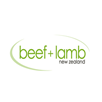Results
results
All work is tracked with an audit trail so you can see what’s been done, the time it took, alerts actioned and phone calls we received from your staff.
We’re big on measurability, accountability and transparencyEssentially, if it has an electronic heartbeat, we can account for it, measure it and report on it. That means you can always have a clear picture of what’s happening.
We establish clear service-level agreements with every client. We even survey your staff from time to time to ensure they feel their IT needs are being met promptly and professionally.
We can also provide comprehensive reports on all devices you own, all software versions you use, all spam we’ve blocked, how much internet data your staff have used, and how much data storage room you have left.
Not only that, we’ll have an opinion about whether things are working well or not, and what – if anything – needs to be done next.
To see what this looks like in practice, check out these case studies below.
case studies

When speed counts
Pead PR is a specialist brand public relations firm, one of the few of its kind in New Zealand. One challenge of the business is the many graphics and video files it creates and stores – files that chew up computer disk space quickly.
Another challenge is the speed of the profession. As Pead PR’s David Paine puts it: “We rely so much on being able to supply details to media in an instant. If the media calls wanting client information, we have to be able to provide it now. That means our IT system has to be capable of delivering on demand – and be easy to use, regardless of the user’s level of IT literacy.”
Read More…

Since 2003, Fisheye has worked with Pead PR to manage all aspects of its IT. In that time, the firm has grown from five to 27 staff and joined the global alliance IPREX. It has also moved offices three times (with Fisheye managing the IT migration each time) and moved from a break/fix model to the Managed Services model of predictable fixed costs.
At the limit
By 2011, Pead PR’s existing IT infrastructure had reached its limit for the size and pace of the business.
- Disk storage had reached more than 95% of capacity. The company had to consistently resize or delete images to keep within limits.
- Mailbox storage was also at near capacity despite a powerful archiving solution.
- Because of this, small but meaningful interruptions, such as hard drives freezing, had become more common.
- Server software had reached or was nearing the final stages of support from the manufacturer and was not able to take advantage of the new features and capacity offered by the latest versions.
- The firm’s senior staff often work remotely, making a VPN a necessity.
It was time to bite the bullet and undertake a full-on server infrastructure upgrade that delivered all the capacity needed (with room to expand further) and the extra capabilities demanded by the company’s evolving structure.
Easier said than done. Pead PR staff work long hours, including weekends, and a server infrastructure upgrade is inherently disruptive. Another reason was the expense: infrastructure upgrades are a serious capital investment.
Bigger, faster, affordable
Our first step was to appoint a dedicated technical project manager to the upgrade – someone who not only understood the complex technical requirements of the project, but could also speak the client’s language and had great customer relationship skills. In our view, many unsuccessful IT projects are the result of poor communication rather than technical shortcomings.
We arranged planning meetings around the client’s schedule, which often meant meeting on Saturday mornings. Every part of our proposal was explained in plain English (as well as the appropriate technical terms).
Once the plan was agreed on, we arranged to do all disruptive work between 7pm and 7am, to ensure the client’s business was not interrupted. We gave at least a week’s notice for any work that required the server being down for any length of time.
Fisheye also worked with software and hardware vendors to provide an OPEX package that enabled Pead PR to manage costs over time. We developed user documentation that put control in the client’s hands, reducing day-to-day reliance on Fisheye.
In conjunction with the upgrade, Fisheye also developed an ongoing plan to keep Pead PR running smoothly. “Computers only last three years these days,” says David, “and with 30 staff, it makes sense to us to manage future transitions in a staged manner.”
Before
- The server and its software was out of date and in the final stages of support from Microsoft. It was also unable to take advantage of the features and capacity offered by the hardware in new servers.
- The email requirements had outgrown the capacity of the system
- The storage requirements had outgrown the backup capability
After
- Storage capacity increased 16 times to 8 Terabytes
- Hardware configured to create a fail-over cluster so the failure of an individual hardware component does not bring down the network
- Mailbox store maximum size increased from 70GB to virtually limitless.
- Backup/recovery times reduced through use of ShadowProtect – the frequency of backups has increased from once to 3 times a day
- Failover cluster reduces downtime in event of hardware failure (to almost zero)
- Virtualisation provides capacity to increase the number of servers with no/minimal further investment in additional hardware.
What does all this mean? Pead PR’s business had grown to the point that it had exceeded the capacity of its hardware and software and the company recognised it was time to reinvest in IT infrastructure to accelerate the business not hold it back.
Benefits
Thanks to the upgrade, Pead PR can count on its system delivering information whenever required – and its reputation for fast, reliable information remains secure.
The firm’s senior staff can now log in to the company network remotely, which enables them to work securely 24/7 (as is often required by the demands of news media that are on duty 24/7) and from wherever they happen to be.
Image storage and retrieval is now a simple matter – and will continue to be so thanks to a virtual environment that enables Pead PR to “buy” more disc space as needed, without the cost of new hardware. The same applies to email storage and retrieval.
Backups now take place three times a day (previously once daily), providing faster recovery times and less data loss in the event of failure. Thanks to failover cluster technology (having multiple servers available, with one ready to “kick in” should another fail), the new system reduces the impact of any hardware failure to almost zero.
“We were very happy with this project. Fisheye provided one point of contact, which kept things simple. What’s more, we’ve always been able to contact the company’s managers at any time with anything we want to discuss. There’s no hierarchy or red tape to get through – it’s all about getting the job done.”
David Paine, Pead PR

Migrating a 2.5 million-record database from Access to Universe
While not a lot of people know it, it’s illegal to export meat from New Zealand unless you are a registered meat exporter, and to become registered you have to meet minimum standards of food safety.
New Zealand has a proud record of supplying safe food to the world, and that reputation must be protected. Make’s sense. Here’s the complex bit. In 2011, the number of records relating to meat exports ran to about 2.5 million dating back to 1997 and was housed in various unsupported Access databases in different locations within the New Zealand Meat Board databases.
Read More…

Beef + Lamb New Zealand’s Economic Service (B+LNZ), who manage the Exports Database on behalf of the New Zealand Meat Board, recognised the potential business and security risks. They engaged Fisheye to transfer the database from Access to U2 Universe, a more stable, flexible platform aligned with other internal systems.
In the process, Fisheye was to also:
- develop a new user interface that aligned with the B+LNZ system, ensuring security and restricted user access for the New Zealand Meat Board function and at the same making the database easy to use and removing the additional costs of duplicated systems
- enhance the database from a list of exporters to a database that provided an economic service to users
- formalise a number of processes that had become ad hoc over the years
- develop new user tools to replace systems that had become outmoded
- build in scalability
- automate processes where possible, including the capture of data from NZ Customs (who collect the data before forwarding it to Beef + Lamb for storing on the database) using security management tools
- allow users to generate reports based on a variety of queries.
Not one task, but many
While migrating a database sounds like a single task, in fact it’s made up of a multitude of sub-tasks, each with its own demands.
Migrating the Meat Exports Database included:
- Setting up new tables and fields in Universe
- Setting up the database environment to allow strictly permission-based access for authorised personnel only
- Importing data from NZ Customs and checking for accuracy and consistency
- Importing ISO data from UN authorities
- Importing historical data from the Access system from as far back as 1997 – a total of 2,500,000 records in the main tables
- Creating browser-based data input forms that were consistent with other computer applications familiar to Beef + Lamb Economic Service staff. The input forms included Help buttons and documentation to assist users through each step of the process.
- Creating routines to verify and import monthly data transfers from Customs
- Creating extra dictionary items as required for reporting
- Creating approximately 20 new reports
- Creating an ad hoc report creation system
- User testing
- User documentation
Adding to the complexity of the task was that data came from multiple sources, sometimes with different data sets within each.
Cros Spooner, Beef + Lamb New Zealand Ltd Chief Operating Officer, says “Fisheye had to understand the existing database, then set up a database that replicated all the previous data from Customs, along with security around access to the database and validation checks and enhancements where they made sense.”
Validation checks mean that all data transferred from Customs must be checked for errors using a robust set of protocols. If an error is found, it is reported to the user who can then take remedial action before accepting the data into the database.
Results
This complex and demanding project was delivered on time and within budget. More to the point, “Fisheye have helped us remove risk from the equation,” says Cros Spooner. “There is little chance of the database falling over, the database is included in a secure area of a larger database platform that provide significant system synergies, we now have a better standard reports, along with the potential for further enhancements.”
The key? “Fisheye had a good project plan and costs were managed well. Regular project meetings ensured things stayed on track. I was very happy with how they managed communications and also pleased that they stayed on budget.”


